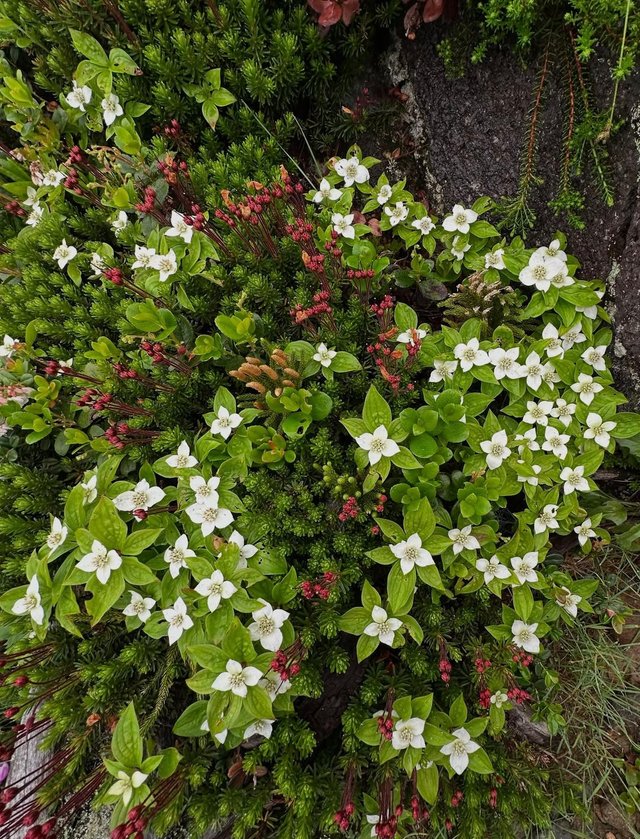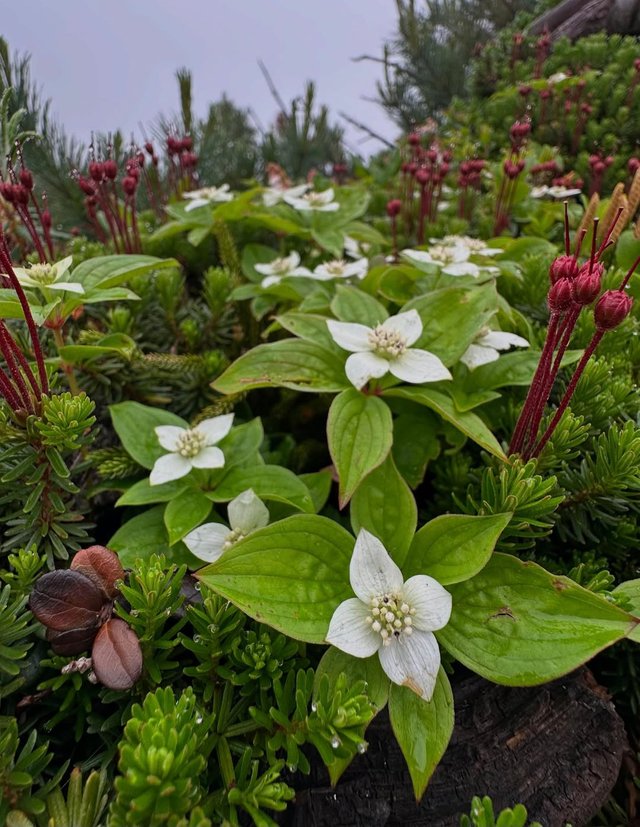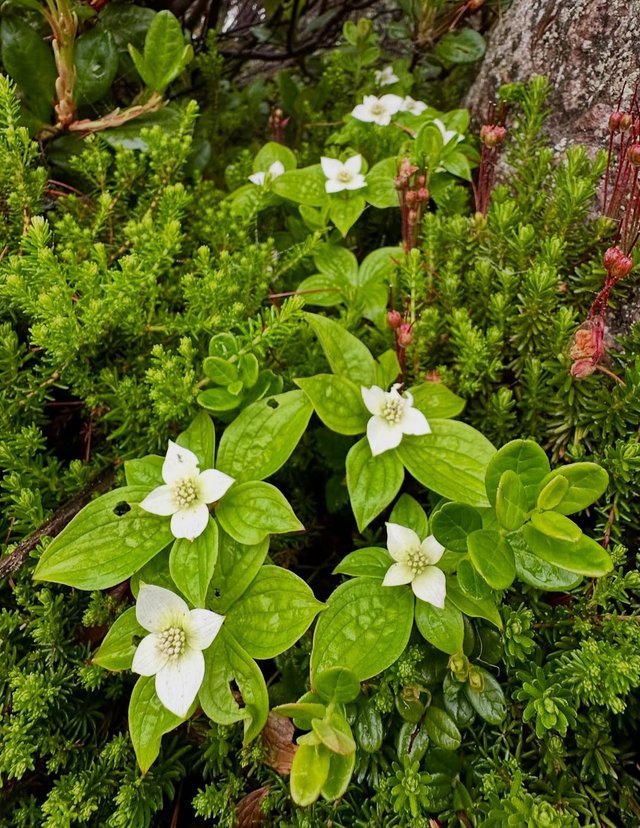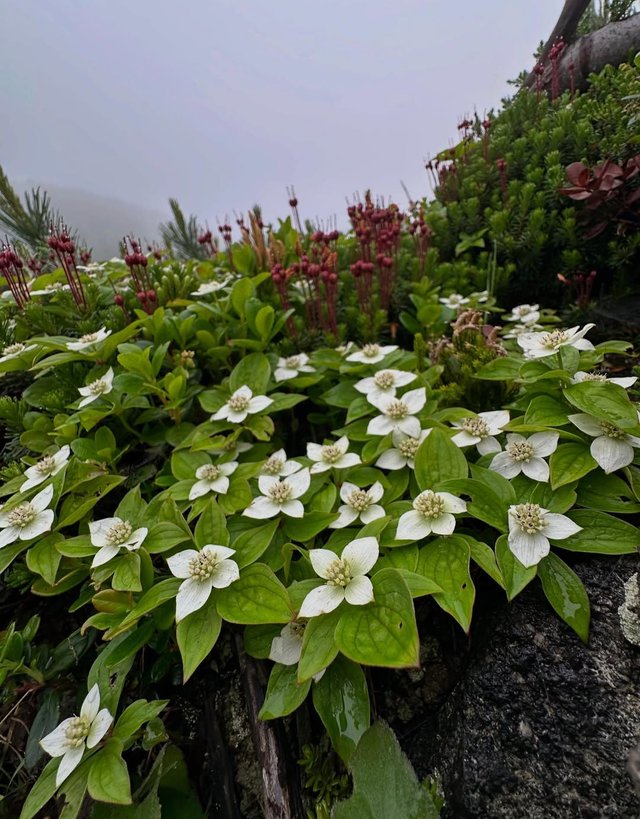Western Bunchberry
In the shaded understories of coniferous forests across the Pacific Northwest and parts of northern North America, a small but extraordinary plant quietly spreads its leafy mat across the forest floor. Meet the Western Bunchberry (Cornus unalaschkensis), a native wildflower that might go unnoticed at first glance—but once discovered, it reveals a fascinating story of resilience, ecological importance, and botanical elegance.Also known as Alaskan Bunchberry, this plant belongs to the dogwood family (Cornaceae) and is closely related to the better-known flowering dogwoods, yet it grows much closer to the ground. Let’s dive into the hidden world of this delightful native groundcover—its form, function, habitat, and ecological value.
It thrives in coniferous or mixed woodlands, particularly in moist, shaded, acidic soils, where mosses, ferns, and towering trees dominate the landscape. It often carpets the forest floor alongside its close relatives like mosses, trilliums, and salal.Despite being a close relative of tree-sized dogwoods, Cornus unalaschkensis is a herbaceous perennial groundcover with a charming and delicate appearance Whorled in a group of 4–6, the oval leaves are rich green with noticeable veins and a slightly wavy margin.Tiny greenish flowers are surrounded by four to six large, white bracts—these bracts look like petals and give the appearance of a single, showy flower.




